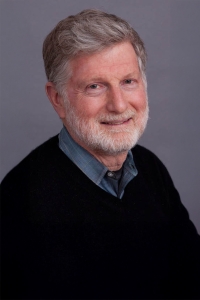
Overview
Academic Appointments
- Professor of Clinical Neuroscience (in Psychiatry)
Gender
- Male
Research
We are investigating cellular mechanisms of learning and memory in two experimental systems: the gill- and siphon-withdrawal reflex in Aplysia, and long-term potentiation in mammalian hippocampus. We are also exploring possible relationships between the mechanisms in these two systems.
Our studies in Aplysia have focused on two simple forms of learning: sensitization and classical conditioning. We use electrophysiological, imaging, and genetic methods to investigate cellular mechanisms of these forms of learning in isolated cell culture. We also study cellular mechanisms during learning in dissected preparations, in which it is possible to relate more directly the mechanisms to behavior.
We have also focused on long-term potentiation (LTP) in the hippocampus, a long-lasting form of synaptic plasticity that is thought to be involved in mammalian learning and memory. We use electrophysiological, imaging, and genetic methods in hippocampal slices and in dissociated cell culture to investigate cellular mechanisms of LTP.
Research Interests
- Neurobiology of Learning and Memory
- Synapses and Circuits
Grants
- Genomic bases of behavioral learning: Single cell approaches
Project Dates: 07/01/11 to 01/31/16 - New synapse formation during long-term plasticity
Project Dates: 07/01/15 to 06/30/16 - Neurotrophins, spontaneous release, and synaptic growth cascades
Project Dates: 07/01/13 to 06/30/18
Selected Publications
- Jin, I., Puthanveettil, S., Udo, H., Karl, K., Kandel, E.R., and Hawkins, R.D. (2012a). Spontaneous transmitter release is critical for the induction of long-term and intermediate-term facilitation in Aplysia. Proc. Natl. Acad. Sci. USA 109: 9131-9136.
- Jin, I., Udo, H., Rayman, J.B., Puthanveettil, S., Kandel, E.R., and Hawkins, R.D. (2012b). Spontaneous transmitter release recruits postsynaptic mechanisms of long-term and intermediate-term facilitation in Aplysia. Proc. Natl. Acad. Sci. USA 109: 9137-9142.
- Antonova, I., Lu, F.-M., Zablow, L., Udo, H., and Hawkins, R.D. (2009). Rapid and long-lasting increase in sites for synapse assembly during late-phase potentiation in rat hippocampal neurons. PLoS ONE 4: e7690. doi:10.1371/journal.pone.0007690.
- Antonov, I., Ha, T., Antonova, I., Moroz, L.L., and Hawkins, R.D. (2007). Role of nitric oxide in classical conditioning of siphon withdrawal in Aplysia. J. Neurosci. 27: 10993-11002.
- Wang, H.-G., Lu, F.-M., Jin, I., Udo, H., Kandel, E.R., de Vente, J., Walter, U., Lohmann, S.M., Hawkins, R.D., and Antonova, I. (2005). Presynaptic and postsynaptic roles of NO, cGK, and RhoA in long-lasting potentiation and aggregation of synaptic proteins. Neuron 45: 389-403.
- Antonov, I., Antonova, I., Kandel, E.R., and Hawkins, R.D. (2003). Activity-dependent presynaptic facilitation and Hebbian LTP are both required and interact during classical conditioning in Aplysia. Neuron 37: 135-147.
- Antonova, I., Arancio, O., Trillat, A.-C., Wang, H.-G., Zablow, L., Udo, H., Kandel, E.R., and Hawkins, R.D. (2001). Rapid increase in clusters of presynaptic proteins at onset of long-lasting potentiation. Science 294: 1547-1550.
For a complete list of publications, please visit PubMed.gov